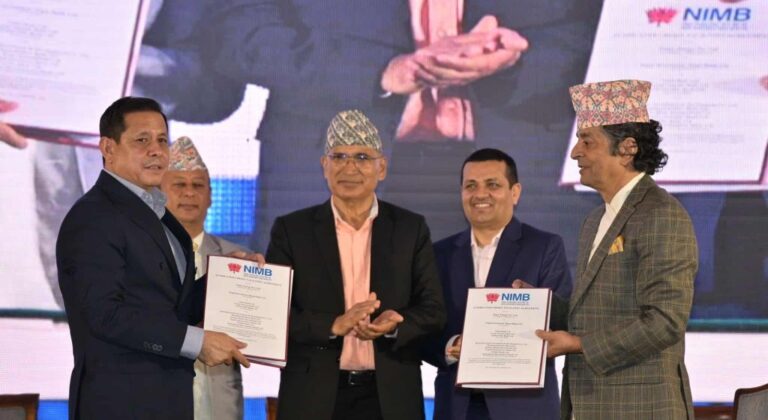Banking News – A landmark agreement has been signed for what will become the largest privately developed hydropower project in Nepal. At a ceremony held in Kathmandu, the Budi Gandaki hydropower initiative boasting a capacity of 341 megawatts and a semi-reservoir setup secured a total investment commitment of NPR 52.5 billion. The investment is being led by Nepal Investment Mega Bank, alongside eight other banks and a development company.
Under the agreement, the bank-specific investment allocations are as follows:
- Nepal Investment Mega Bank: NPR 10 billion
- Laxmi Sunrise Bank: NPR 8 billion
- Nabil Bank: NPR 8 billion
- Global IME Bank: NPR 7 billion
- Machhapuchchhre Bank: NPR 4 billion
- Citizen Bank, Nepal Infrastructure Bank, Prabhu Bank: NPR 3 billion each
- Agricultural Development Bank: NPR 2.5 billion
- Hydroelectricity Investment and Development Company Ltd. (HIDCL): NPR 4 billion
The signing ceremony took place with the presence of Finance Minister Bishnu Poudel and Energy Minister Deepak Khadka .
Projected total cost for the project is NPR 70 billion at a per-megawatt rate of NPR 205.3 million. Approximately 25%, or NPR 17.5 billion, will be raised as equity, with Sahasa Energy contributing 51% of that equity. The company asserts that the investment will be recouped within about 5.54 years after commencing commercial operations.
According to Him Pathak, Chairman of Sahasa Energy, preparatory work is already underway, with full-scale construction expected to commence in Poush 2082 (around mid‑December 2025). The project has also completed land compensation, constructed access roads, and even built a Bailey bridge for local communities to facilitate connectivity.
This hydropower facility marks the largest infrastructure venture the private sector has undertaken in Nepal, far exceeding earlier projects such as the Solu Dudhkoshi hydropower plant (operational as of late 2022) and the Ruru hydropower project (5 MW).
Key project features include:
- Electricity purchase prices agreed at NPR 10.55 per unit during peak dry season, NPR 8.40 during regular dry season, and NPR 4.80 during the wet season
- Located across Gorkha’s Dharche‑1 & 3 and Chumnubri‑3 rural municipalities, partly overlapping Manaslu Conservation Area
- A designed discharge capacity of 100.27 m³/s, creating a 2‑kilometer-long reservoir with a storage volume of about 17.6 million cubic meters
- Infrastructure includes a 6.5 km tunnel connecting Fuget to Vinchet, an underground powerhouse with six turbines totaling 60.43 MW, and a 45 km transmission line to connect with the Ratmate substation
- At a head of 398 meters, with daily peaking storage, the annual average generation is estimated at 1,837.16 GWh
- Most of the physical components will be underground, reducing vulnerability to earthquakes and floods, with proximity to load centers making the project both economically and technically viable
- Compensation and initial construction have progressed, with commercial production targeted by 2030
Why It Matters
This initiative signifies a crucial turning point in Nepal’s energy landscape boosting private investment, accelerating infrastructure development, and charting a sustainable trajectory toward energy self-reliance by 2030.
Would you like a map of the project site, financial breakdowns, or insights on how this fits into Nepal’s broader energy policy?



 About Us
About Us
Comment